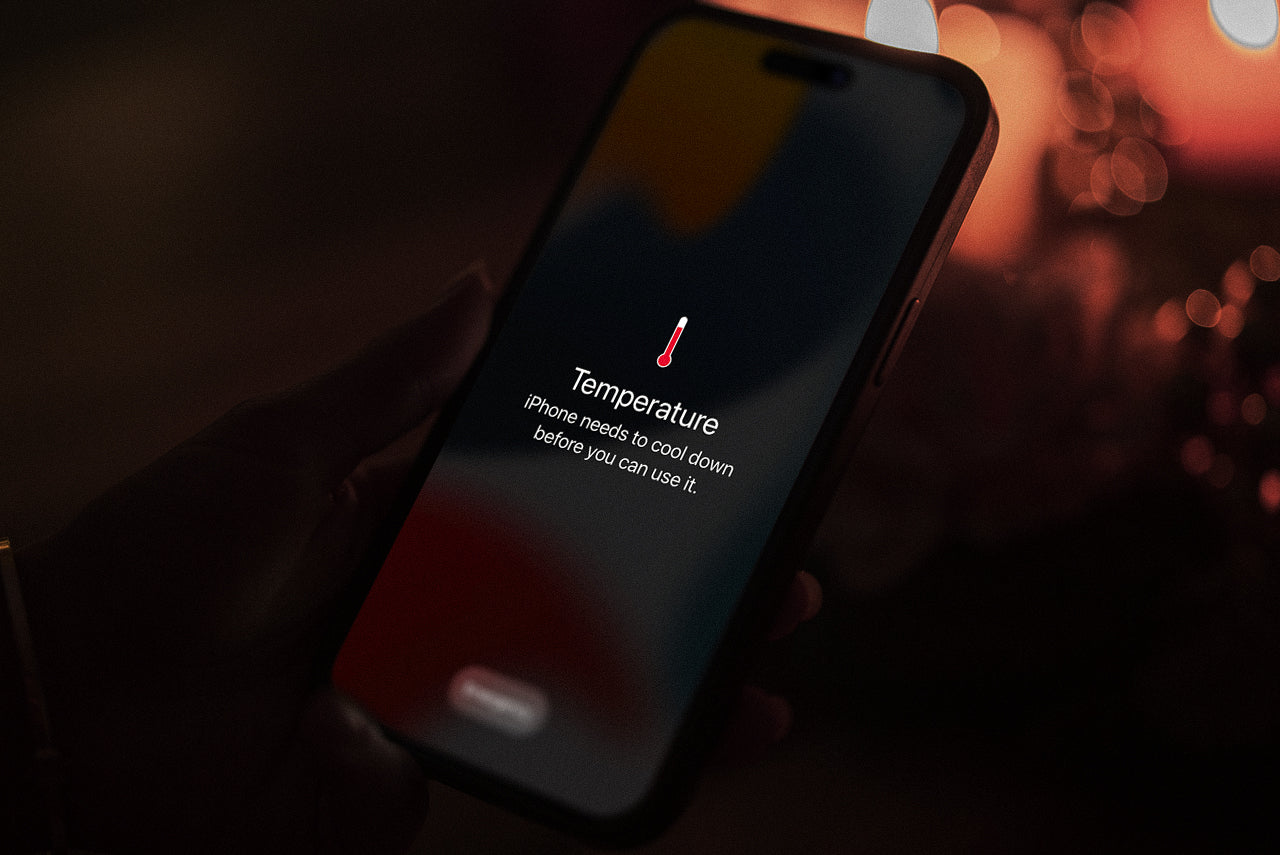iPhone Overheating: Causes and Solutions

iPhone overheating is a problem that most users have experienced at least once. iPhone gets hot, runs slower, fails to charge, and display dims, which makes one wonder, ‘Why is my iPhone overheating even though I’m not doing anything wrong?’ The reasons are many—some external and others internal. However, it’s critical for users to be aware of anything that might cause harm to their devices.
In this article, we’re providing solutions on how to stop iPhones from overheating, the worst practices to avoid, and the top reasons for this issue.

Why Is My iPhone Overheating?
Understanding the root of the problem helps in addressing it precisely, and while there’re many reasons for iPhone overheating, here’re the most common:
Intensive Usage
Using your iPhone for extended, uninterrupted periods, particularly while engaging in high-intensity games, applications, streaming content, and background apps, can significantly load the iPhone’s processor and battery. As iPhones and smartphones generally lack internal fans like laptops, their hardware, and components can become overburdened, resulting in overheating.
Environmental Factors
Leaving any phone outside in the sun isn’t recommended. Most components integrated into iPhones, including the battery, CPU, sensors, etc., are sensitive to high temperatures. Exposure to these conditions for extended periods can shorten the battery’s life, cause poor performance, screen damage, and so on.
Poor Signal
If you’re in an area with a poor cellular network, your iPhone’s system has to work harder to scan the area, which can strain the battery and raise its temperature. In addition, if a connection is found, the device will exert extra effort to maintain this connection.
Software Updates
iPhone getting hot during or after software updates is a normal occurrence, attributed to the miscellaneous tasks the device undergoes in the process that require increased power to complete. The case is no longer considered normal if the overheating continues for a few days after completing the update.
Battery or Charging Issues
“Why is my iPhone overheating while charging” is a question that all iPhone users constantly ask. It became apparent that if there’s an issue with the iPhone’s battery, charger, or cable, the charging process won’t complete safely and may strain the device, leading to overheating. To prevent iPhone overheating when charging, only the original Apple charger and cable should be used, and the device should not be used until the charging process reaches 100% completion.

Best Ways to Stop iPhone from Overheating?
Even if the cause is unknown, you can carry out many acts to prevent damage to your iPhone’s internal components. Nevertheless, if none works, professional advice is instantly required.
Restart Your iPhone
App accumulation, excessive CPU usage, and cached data can all contribute to a phone overheating. However, those can be cleared, reducing the strain on the phone’s battery and components and consequently lowering the temperature. This solution, nevertheless, isn’t always effective. If the iPhone overheating continues even after restarting, a serious underlying problem may exist, and one must investigate the root cause.
Remove the Case and Cool the Phone
While functioning as a shield against accidents, an iPhone case can also impede heat release. It’s essential to exercise caution when selecting an iPhone case, as a low-quality case can potentially be the primary cause of overheating. Only original iPhone cases should be used to ensure optimal performance and heat dissipation.
Improve Charging Practices
iPhone overheating can be exacerbated or minimized based on usage and charging practices. Refraining from using the phone while charging, employing an original charger, avoiding third-party chargers and cables, and charging only in well-ventilated areas can significantly decrease the likelihood of overheating.
Try Wireless Charging
With cords and cables eliminated and no physical connection between the phone and the charger, the likelihood of overheating is reduced, and there’s less wear and tear on the phone. In addition, wireless chargers have an advanced work mechanism that turns off and stops charging when the charging process is complete. It can be a safe alternative to wired charging, but only if the wireless charger is compatible with the iPhone and the charging process is executed correctly.
Put iPhone in Low Power Mode
By enabling this mode, your iPhone will use less energy, reduce background activity, and minimize visual effects. In short, this mode activates only the necessary features and reduces strain on the battery. It’s also advisable to enable this feature while charging to expedite the charging process.
Keep Your Apps Updated
There is a reason why developers release new versions for all apps periodically: this allows them to eliminate bugs, reduce power consumption, and optimize background processes, which all make iPhones get hot. Therefore, updating your apps whenever a new update is launched is highly recommended.
Update iOS
Updating your iPhone’s iOS isn’t only about getting the latest features, as each update addresses specific device issues such as bug fixing and software glitches, which usually directly influence the iPhone overheating. Outdated iOS, in addition, may not comply with other updated apps, resulting in inefficient resource usage.
Worst Ways to Stop iPhone from Overheating
There’re many myths and wrong beliefs on how to stop iPhones from overheating that most users do without knowing their dangerous consequences:
Placing iPhone in the Freezer
Even though it might seem like a safe, effective, and fast way to reduce a phone’s temperature, putting it in the fridge can cause permanent damage. These problems include water expansion, shrinking metal, and circuit damage. Such results don’t appear in a short time span but over the long run and are hard to fix.
Putting iPhone in Cold Water
Even if the iPhone is water-resistant, a rapid and instant shift in the phone’s temperature from hot to cold by submerging it in the water can cause greater damage to the phone than overheating can. In addition, the chances of water-resistant seals being damaged are always present, regardless of the IP level.





